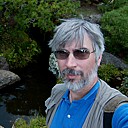Wesley R. Elsberry

Posts: 4991
Joined: May 2002
|
| Quote (Dr.GH @ Mar. 25 2009,18:44) | Excellent advice, Wes. I have been very slow to convert to digital cameras. I have instead used the college computer lab's slide copier.
I am ready to buy one for myself.
Any recommendations? |
With the lens-first advice, one needs to figure out what subjects are most likely to attract your attention. Pick the lens to suit that, then pick the body to provide the convenience features that you want/need. Good glass costs real money. Even good third-party lenses that have the right specs are going to be a significant fraction of the cost of most camera-brand lensmaker's products... except if one is talking Leitz or Zeiss. Picking good third-party lenses does open up the choices on camera systems, since the third-party manufacturers usually offer the same lens design in a variety of mounts.
For general wildlife and mid-scale subjects at modest distances, one can hardly go wrong with a 70-200mm f/2.8 constant aperture zoom lens, especially with image stabilization. Both Nikon and Canon make outstanding examples of these sorts of lenses, but expect to pay a bit over $1,600 new for either. Third-party lens makers often have good glass in this specification, but not often with image stabilization. Those are considerably cheaper. Nikon's legendary 80-200mm f/2.8 zoom is right around $1,000, and that has no image stabilization. One can get image stabilization in the camera body in Sony and Pentax DSLRs, giving another path to getting all the features together.
For scenics, wide is good. Recent years have seen the introduction of many ultra-wide lenses. Myself, I got the Sigma 12-24mm f/4.5-5.6 lens. The 12mm covers a full-frame view on a 35mm camera, so I have shot some film specifically to take advantage of that.
If you want to do wildlife that is smaller or at longer distances, you need good telephoto gear. If you want to take photos of wildlife that isn't out in full daylight, your wallet is going to take a walloping. Long, fast lenses are the high-ticket items in photography. The entry level into that sort of gear would include the Canon 300mm f/2.8 lens at $4,100. One f-stop difference, as in the Canon 300mm f/4 lens, drops the price tag to $1,200. Step up to a 500mm lens, and Nikon offers an f/4 with image stabilization for $8,100. If you want to go the economy route, you can spend a fraction of the money to get a mirror lens and a good tripod. The mirror telephoto lenses offer long focal lengths in a compact and light package. The downside is that they are also usually slower, offer only a single aperture, and introduce odd out-of-focus background artifacts because of the lens design. Long lenses of whatever sort require more discipline to get good results.
If you don't need extreme shot-to-shot speed, you can likely get a camera body billed as being for digital SLR entry level. A few years ago, there were lots of ways to argue for particular cameras or camera systems. Now, just about any recent DSLR design is going to offer a good imager. Most people aren't really going to need anything beyond about 6 megapixels. If you are looking to publish, image editor resolution requirements have been rising with the capabilities of DSLRs, but otherwise 6 megapixels should be considered a sufficient baseline.
Some recent DSLRs also offer "live view" and HD video recording. If those features are needed, that will limit your choices. There are cameras with those features in the Canon and Nikon lineups.
Ken Rockwell offers the advice of getting the Nikon D40. If you are getting all-new gear, it is worth looking at. I believe that Rockwell also elsewhere argues for buying a film SLR and having the negatives or slides scanned, noting that the price of a used pro-quality film SLR is way cheaper than a new pro digital SLR. I've shot almost exclusively digital since 2002, basically only using film to get the most out of my ultra-wide angle lens. The single biggest thing you get with digital is immediacy of feedback. You can check the shot right then. That single thing is, IMO, worth it alone.
--------------
"You can't teach an old dogma new tricks." - Dorothy Parker
|


















